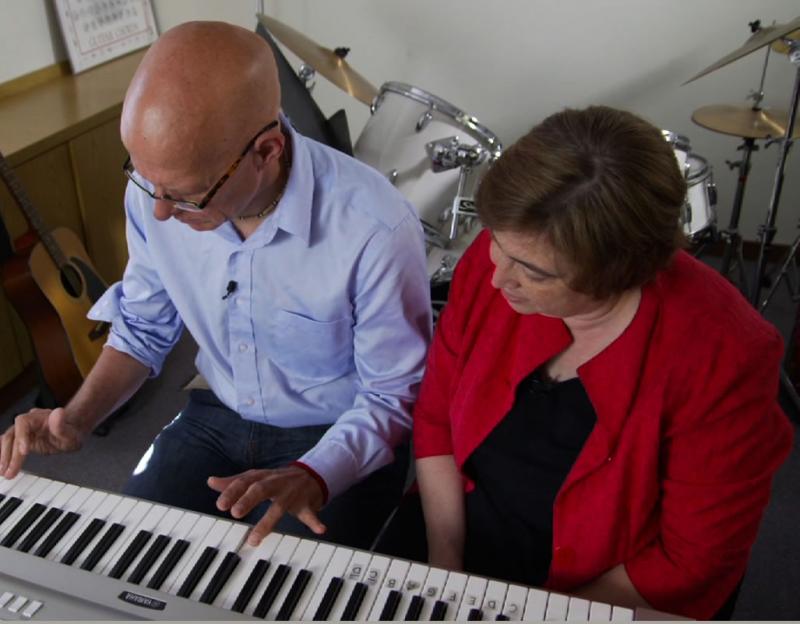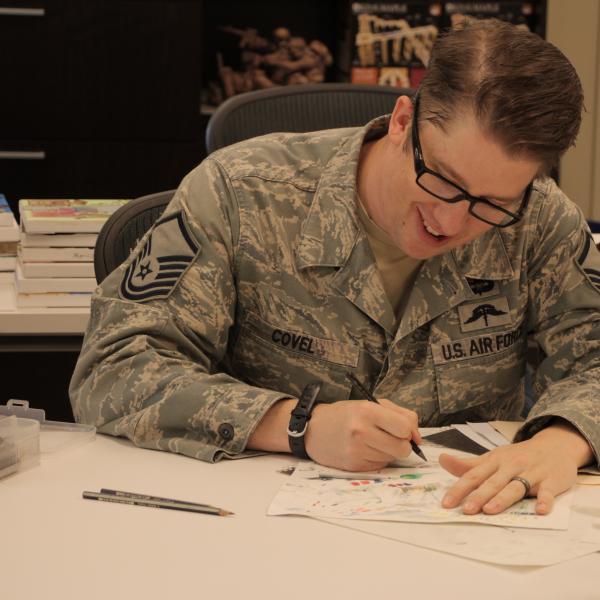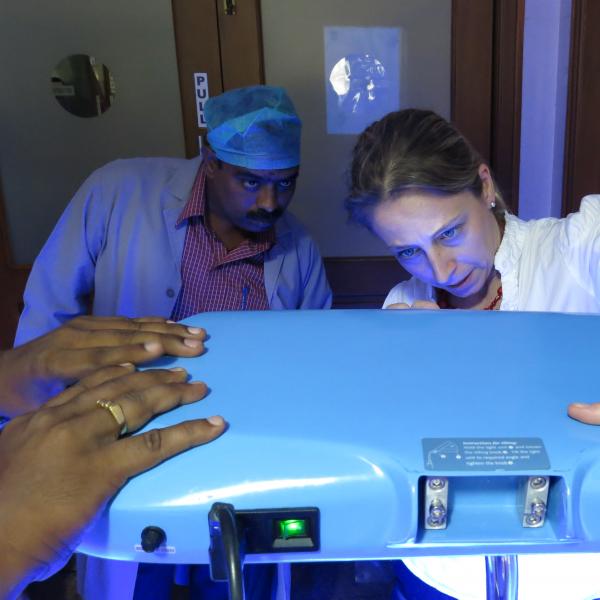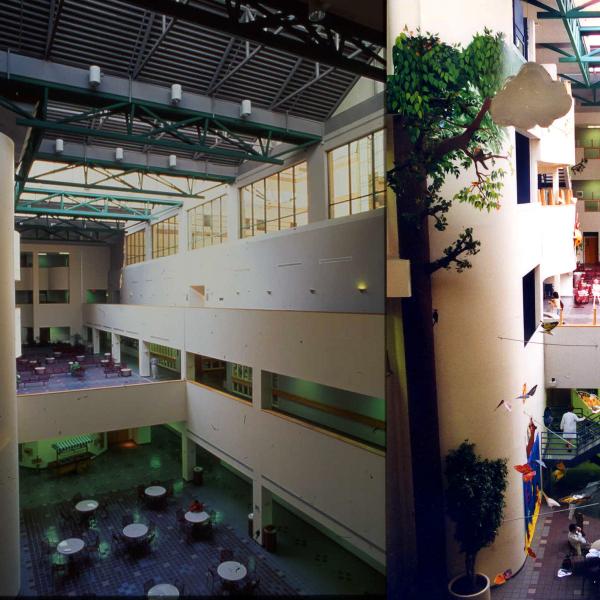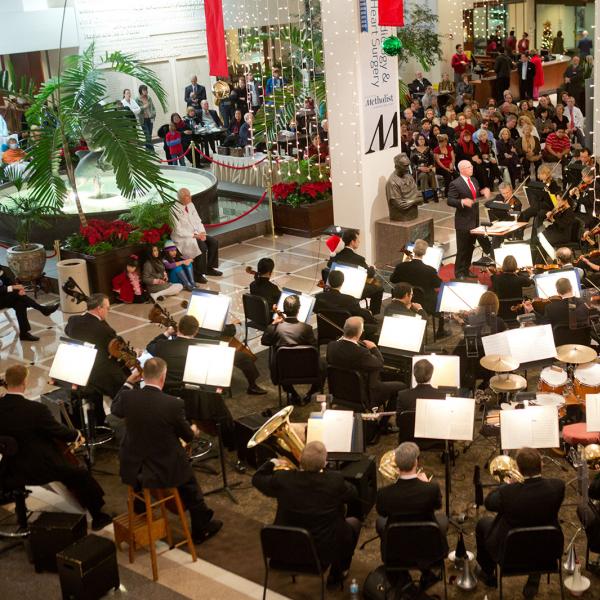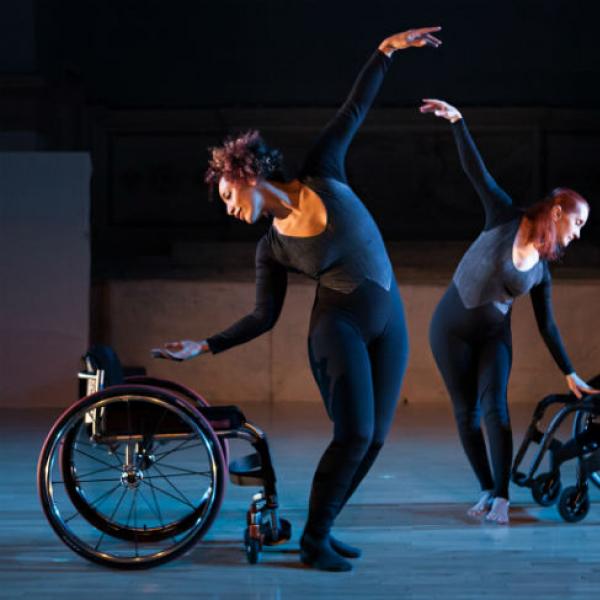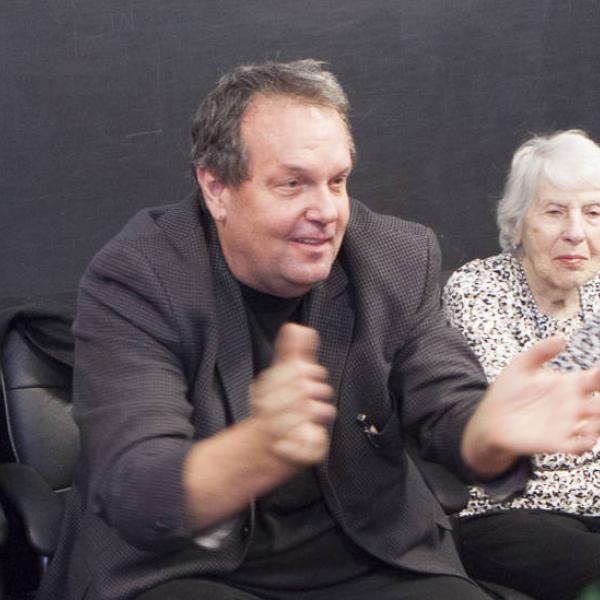Maria Jukic: My name is Maria Jukic, and I’m the Executive Director of the Arts and Medicine Institute here at Cleveland Clinic.
Tom Schorgl: My name is Tom Schorgl. I’m President and CEO of the Community Partnership for Arts and Culture in Cleveland, Ohio.
We have three core competencies in terms of our services to the arts and cultural sector, as well as the community. One is research. Another one is public policy and then helping individual artists and arts and cultural organizations improve their business practices. Well, we know a lot about arts and culture, but we knew a little bit about arts, culture and health and human services. So, we started the white paper and the more we did research, the more we found that was very exciting and from our particular point of view, began to better define and articulate two of Cleveland’s very important assets, health, medicine, human services in arts and culture.
One of the things that we saw that was very interesting was the design pieces that are part of these case studies. It had to do with the way the Hospice of the Western Reserve worked very closely with the architect that they hired to develop a space that was very, very sensitive to their mission, which is to help people at the end of their lives. And so, when you walk through this new facility, windows, natural lighting are placed in the structure at very important angles. The colors that have been selected in terms of the walls, the carpet, all of those; access for not only the hospice patients in terms of the whole facility, but also the patient’s family is taken into consideration. And also, it’s a green building. So again, it shows that design plays such a very important part of what takes place in terms of the arts, cultural sector and health and human services. A lot of people don’t understand that in many fascinating ways, arts and culture can be integrated and sometimes, it’s not obvious, but it is there.
Maria Jukic: One of the other case studies is about humanizing medical training through interaction with the arts. So, at the Cleveland Clinic Lerner College of Medicine of Case Western Reserve University that’s based here at Cleveland Clinic, there’s a program in medical humanities where the medical students interact with the arts in different ways, going to the art museum and learning about observation techniques, learning about artists working in the community and collaborating with them, and working in the community with different arts organizations to get close to the patients, the future patients for these medical students. There’s a Devising Healthy Communities project for the medical students. The point of this is that the medical students are learning that the arts offer them a deeper way of understanding themselves, patients, communities, themselves and the health of all three.
Our Chairwoman, Dr. Iva Fattorini who’s Chair of our Arts and Medicine Institute, one of her favorite ways to describe what we’re trying to do is to rehumanize medicine.
The use of the arts in healing-- at least at the Arts and Medicine Institute, we believe that it contributes to the experience, and that is the visual arts, the aesthetics, but we also have a performing arts program. Then, we practice and investigate the use of the arts in healing. And right now, our main areas are music therapy and art therapy, and how do those interactions with patients, how do they benefit those patients. We have many research studies going on with that. And related to the visual art program, we recently did a survey of our former patients to see how they experienced and interpreted the art. And 91-percent of patients who had spent several days in the hospital said that it improved their hospital experience and with the music, 94-percent said that is improved their experience of the hospital.
Tom Schorgl: I would add that there’s a qualitative and a quantitative element when it comes to arts and culture from our perspective. And when you look at the qualitative, it is something that helps patients and their families adjust to medical situations or health situations that are sometimes difficult to adjust to. But, the quantitative is also equally important, and that I think goes back to what Maria said. There’s research that shows that music therapy has a profound effect on pain relief, particularly when it is compared to pharmacological applications and some of those studies show that the pharmacological approach can be very expensive and sometimes, unfortunately, it can be addictive, whereas music therapy in terms of pain reduction is not as expensive and it’s okay to be addicted to music.
(Music Up)
Maria Jukic: In 2006, we developed a formal visual art program where we had dedicated curators who worked with construction and architects and designers about placing artwork very intentionally, curating a collection, and then a few years later, in 2008, with the history of the arts at Cleveland Clinic, with the success of the visual arts program, and our Chairwoman, Dr. Fattorini, saw both a need and a set of resources here in Cleveland that really could be utilized. That was the arts and culture community in Cleveland, and how could we bring that into the hospital to serve our patients, many of whom are international or national and spend a lot of time in the hospital. So, the idea for having the Arts and Medicine Institute was born.
Our main program areas are the visual art program that I mentioned. We have almost 6,000 now pieces in the collection, in the whole Cleveland Clinic Health System and programming around that, and then we have music therapy and art therapy that are available throughout the main campus, as well as some of our regional hospitals. There, we have about five music therapists, five art therapists working with all kinds of patient populations from inpatient children, pediatrics to outpatient dialysis patients, at the Cancer Institute, the Heart and Vascular Institute; really a wide range of therapeutic interventions for patients with art and music therapy.
Tom Schorgl: I would also interject, I was curator for a museum and I was a director of a museum and I can say from that experience and those professional years in the museum world, the Cleveland Clinic's collection rivals a number of museums in the United States in terms of its quality and its sensitivity in terms of how the works are collected not only for the patients and the patients’ family, but for the workers.
Maria Jukic: Yes. We very intentionally look for pieces of work that can calm, can comfort, amuse or uplift the person interacting with the art. So, it’s a diverse collection. It includes both nature and landscapes, but also photography and prints and fine arts prints and sculptures. We have commissioned pieces, paintings. The idea is to develop a diversity, a diverse collection that can really engage, uplift and inspire the person who’s interacting with the work.
Our performing arts program-- we have performances five days a week and we’re up to now five different locations. Our main performance area is the Karos Grand Lobby of our main building, our main entrance and that really is a central entry point for people coming into Cleveland Clinic. We also have a surgery center where mostly families are waiting for their loved ones to come out of surgery. We have performances there. Then, we have a large building where doctors’ offices and lab and radiology tests are done where really thousands of people come in and out of that building every day. We have performances there. And then recently, we added weekly performances at the Taussig Cancer Institute, in the outpatient building there. I was just there this morning and ran across the pianist playing there for people and it’s a welcoming , rehumanizing experience for someone walking into a hospital environment.
(music up)
Tom Schorgl: I think one of the things that we saw that was very interesting is the breadth and depth of what was going on throughout Cleveland and Cuyahoga County in terms of a number of different medical facilities and health and human services facilities. It was many programs and they were programs that were not superficial. I think that’s clear when you look at Cleveland Clinic’s programs. They run the gamut from design, from therapies, from research and also assisting their staffs, their workers, in understanding how these therapies can be beneficial. So we started to see that it was broad and deep. I think the other thing for us because the arts always seem to be in a situation where they have to justify their existence was the effect of therapies when it came to comparison to pharmacological therapies, art therapies versus pharmacological therapies. And a whole research that’s being done around music and pain relief I think is quite significant
Maria Jukic: What surprises me every day is really the positive interaction, the positive response that people have to our bringing the arts into the hospital. when you walk into a hospital, in a moment, things can go from joy to sorrow. And in this environment, a piece of art that can remind you of good times in the past or in the future. That experience with the arts and the surprise with which we and I say we as an employee but we also as a patient, as a family member when you experience the arts in this environment it takes on just a heightened level of positive reaction, and that’s what surprises me every day. It’s extraordinary.
